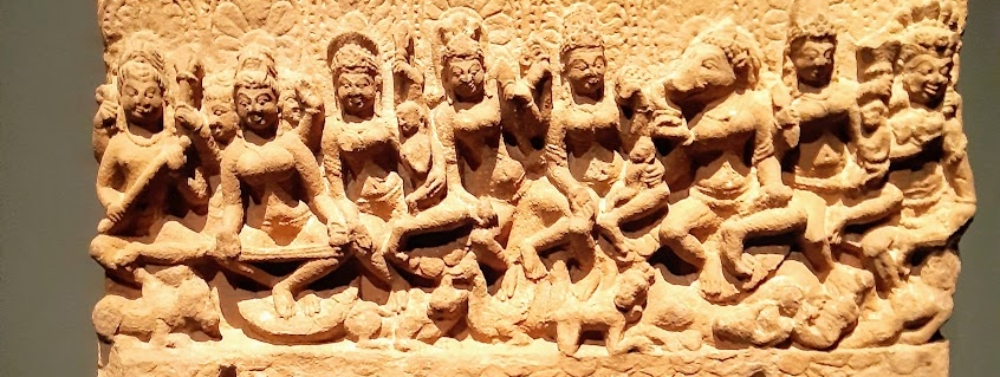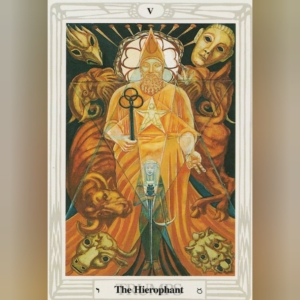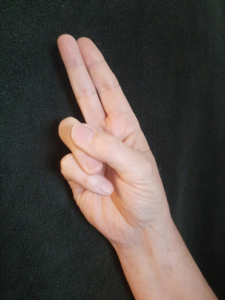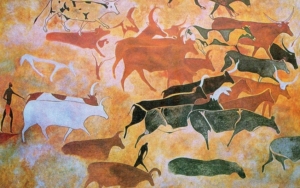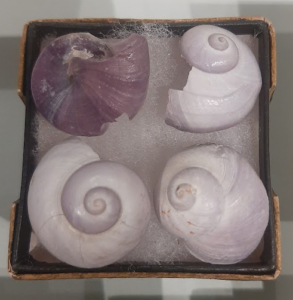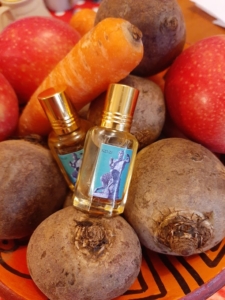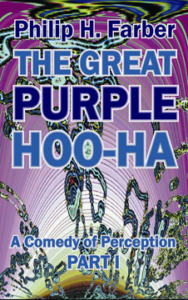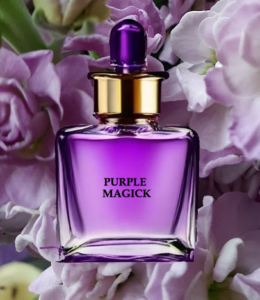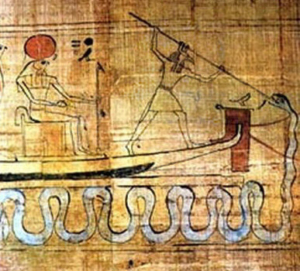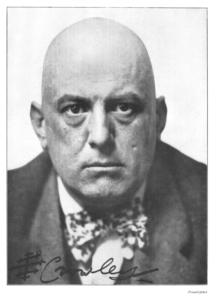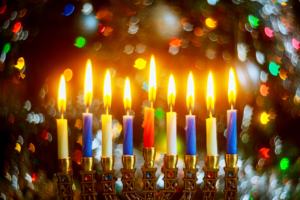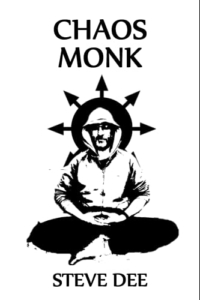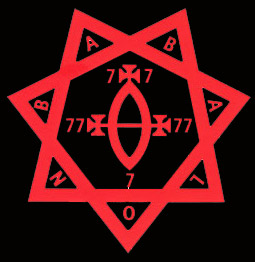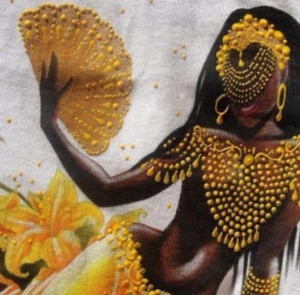Aromagick: Unveiling the Kalas and the 8 Colors of Magick
Aromagick offers genuine insights into the mysteries of the Tantrik “kalas”, something often referenced by other esoteric authors such as the AMOOKOS mages, Kenneth Grant et al. The fruit of a lot of experimentation and personal insight, this ought to be a welcome addition to the library of any mystoi, magician, or yogin, indeed anyone with an interest in the most direct of our senses and how these may be enlisted in the work of deep magick. The author also offers a second scentual sequence explicating the eight-colour system made famous in chaos magick. It is perhaps no surprise that the UK chaos magick scene grew out of, or developed pari passu with an interest in aromatics, real essential oils and incense. We recommend this for all mind explorers, especially those with a good nose for a mystery.
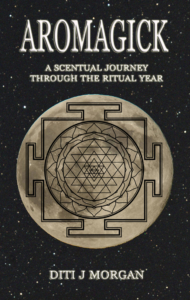
In creating Aromagick, Diti J. Morgan has crafted a beautiful and inspiring book about the use of botanical essences in magic of many kinds. Her deep knowledge and experience of the properties of plants lays brilliantly combined with her equally deep knowledge and experience of Hindu Tantra, Western Esoterics, Mythology, and Folklore, and contemporary Neo-Paganism and Magic. She provides a rich cornucopia of spells and recipes, poetry, imagery, and lore to guide us through the seasons of the year and the many forms of magic that we can attempt at any time. A great deal of research and creativity has gone into this book, and I found much in it to surprise and delight me. I recommend this substantial and remarkable book for deep and enjoyable study and preservation in one’s reference library.
Peter J Carroll. Stokastikos. Southwest England, 2023.
“Aromagick: A Scentual Guide to the Kalas and the Eight Colors of Magic”, is a tantalizing book which wraps Egyptian and Hindu myth, ritual, and magic around a core of expert aromatherapy and plant magic to create a complete system of magic powered by interpenetrating cycles of time. Just as the cycles of moon and sun weave together to form a calendar, so does this book twist together many strands of magic to form an eternal braid. In part one, we learn about the kalas, and ritual baths for every phase of the moon. With each phase, we deep-dive into a ritual bath. Deep and loving attention is played to the spirits of the plants on which the baths rely; each is a master class in plant and perfume magic. In my opinion, just the bath rituals alone would easily be worth the “ticket price” for this book, but there is so much more! Nearly every chapter is bursting with poetry, essays, and juicy magical tidbits.
In part two, we expand our circle, now focusing on the eight witch’s sabbats of the wheel of the year and their relationship to the eight colours of chaos magic. Here too, Diti’s depth of knowledge and joy in practice shine through. Each sabbat has a ritual bath, as well as additional material that extends, contextualizes, and tantalizes. I received the manuscript shortly before the autumn equinox, so that is where I started. The chapter opens with the powerful gnostic poem “Thunder, Perfect Mind” from the Nag Hammadi manuscripts, continues with an invocation of the Egyptian fertility goddess Ipet, moves on to a short essay about the magical virtues of the colour blue, and its relation to the season, and then provides an essay by noted scholar of Egyptian magic (and Diti’s husband) Mogg Morgan about Ma’at, the Egyptian deification of Divine Balance. The chapter concludes, as each does, with an amazing dreamy bath recipe – this one centred on blue lotus, chamomile, jasmine, frankincense, and bergamot. Just listing the ingredients is enough to make me swoon at their intoxicating fragrance! All of that is just one chapter of this fascinating book! I can’t wait to continue working with it throughout the year.
Sara L Mastros author of The Sorcery of Solomon: A Guide to The 44 Planetary Pentecals of The Magician King

Diti is an Aromatherapist, a magician/witch/priestess/dragon
and none of the above. She is an Artisan Perfumer of the Jitterybug kind. When she has time she hangs out at the Apophis Club and studies at the Fox Magic Mystery School. She also makes great apple cakes.
Scroll down for the full interview with Diti J Morgan
Can you introduce yourself and say a little about what you do, your aims and objectives with your writing?
I am Diti J Morgan, an aromatherapist with almost 27 years of experience. I learned that when I blend certain essential oils with a meditative and ritualistic mindset, something special and magical happens. Those who walk the magical path will discover that they have this challenge, to share their vision of the mysteries, instead of accepting what is already given. My challenge is to reveal the scentual path of Aromagik.
If you haven’t already, can you say a little more about your family background, ie past and current – ie are you married, have children, work – people like a little bit of personal stuff if you ok to share.
I feel extremely privileged and blessed to be sharing my life with a very special person. We explore together, which is perhaps one of the secrets of a magical life.
Do you call yourself an aromatherapist/witch/magician? – if so what does this mean to you? And is it important?
I never liked using titles as I feel they are restrictive.
I go by Diti, which is a nickname for Judith or Yehudit in Hebrew. I was given this name (Diti) when I was a baby of three months. In Jewish culture, and more so in Kabbalah, a person’s name has a lot of meaning and influence. Judith was a lovely Jewish widow, who left the city that was under attack by pretending to join the enemy and predicted to Holofernes that he would be victorious. She entered his tent, where she cut off his head while he was in a drunken slumber and took it in a bag to Bethulia. The Jews then overcame the Assyrians who were leaderless.
The greater the quality of the name, the more positive its influence is believed to be on the person’s life. According to Kabbalah, the letters that form a name connect the physical and spiritual worlds, not only in how the name is written but also in how it is perceived and recited. As a result, a name acts as a “channel” that transmits energy, whether positive or negative and serves as a bridge between a person’s physical and metaphysical worlds. In Hebrew, the name Yehudit contains within it the letters of God
– י ה ו י
A few years ago, when studying and exploring the path of the Kaula-Naths I was very excited to learn some more about the name Diti. In the excellent book, The Myths and Gods of India, the author Alain Danielou writes a short entry about the legend of the Maruts:
A Legend of the Maruts
“In the Ramayana (1.46), the Maruts spring forth from an unborn son of Diti, the mother of the antigods.
The mother of the antigods was in great distress. Vishnu had destroyed her two sons, Golden-Eye (Hiranyaksa) and Golden-Fleece (Hiranya-kasipu). In her desire for revenge, Diti, with womanly patience and cleverness, endeavoured to please her husband Vision (Kasyapa) and obtain from him a son who would destroy Indra, himself a son of Kasyapa.
Vision would not cooperate directly, but he advised Diti to perform the son-giving (pumsavana) penance. As the penance approached its completion, Indra felt anxious. He descended upon the earth and began to serve Diti like a disciple. Should she succumb to pride but for one instant this would give him a chance to frustrate her aim. For a long time, Diti was cautious in her austerities, but one day, at sunset, she fell asleep. Indra took advantage of this. Entering the womb of Diti, he tore the fetus into forty-nine fragments with his thunderbolt. These fragments became the Maruts. Indra made them guardians of the chalice of Soma.”
Judith or Diti, you may call me either, but I know for sure that both of my names are my “paths” that convey energy, good or bad, and connect my material and spiritual realms.
Mandrake has published your book – can you say a little about it?
The book Aromagick merges magical thinking and practice with my love for scents, aromatics, and perfumes. In the opening section, you can explore the fragrances and scents of the lunar journey through the Kalas.
Kala means part, perhaps also a “lunar perfume or flower”. These mysterious but extremely important principles, derived from esoteric Hinduism, were related to the cosmic tides of the moon, those that ebb and flow during a lunar month.
Following several years of studying the esoteric cycle of the lunar divinities, the Kalas, I gained a fresh perspective and understanding of these enigmatic deities. Each lunar day is said to have its unique magical quality represented by a Kala and a specific fragrance. In Aromagick, you can explore the lunar-Kala cycle’s two distinct sequences, namely the light and dark cycles, and discover the fragrances and perfumes that correspond to each of them.
In the second part of the book, I deal with the Eight Witches Sabbaths of the Ritual Year and how they resonate with the Eight Magics and the corresponding colours and scented essences.
Is the journey in your book for everyone or only for the expert or indeed aimed at the beginner?
Everyone can benefit from Aromagick. It provides a great introduction to essential oils, the moon cycle, the Kala sequences, and the Eight Sabbaths for beginners. For advanced magicians and witches, Aromagick offers new and deeper insights into familiar subjects. Additionally, advanced Tantrics and Naths can discover a fresh perspective on the Kala system.
